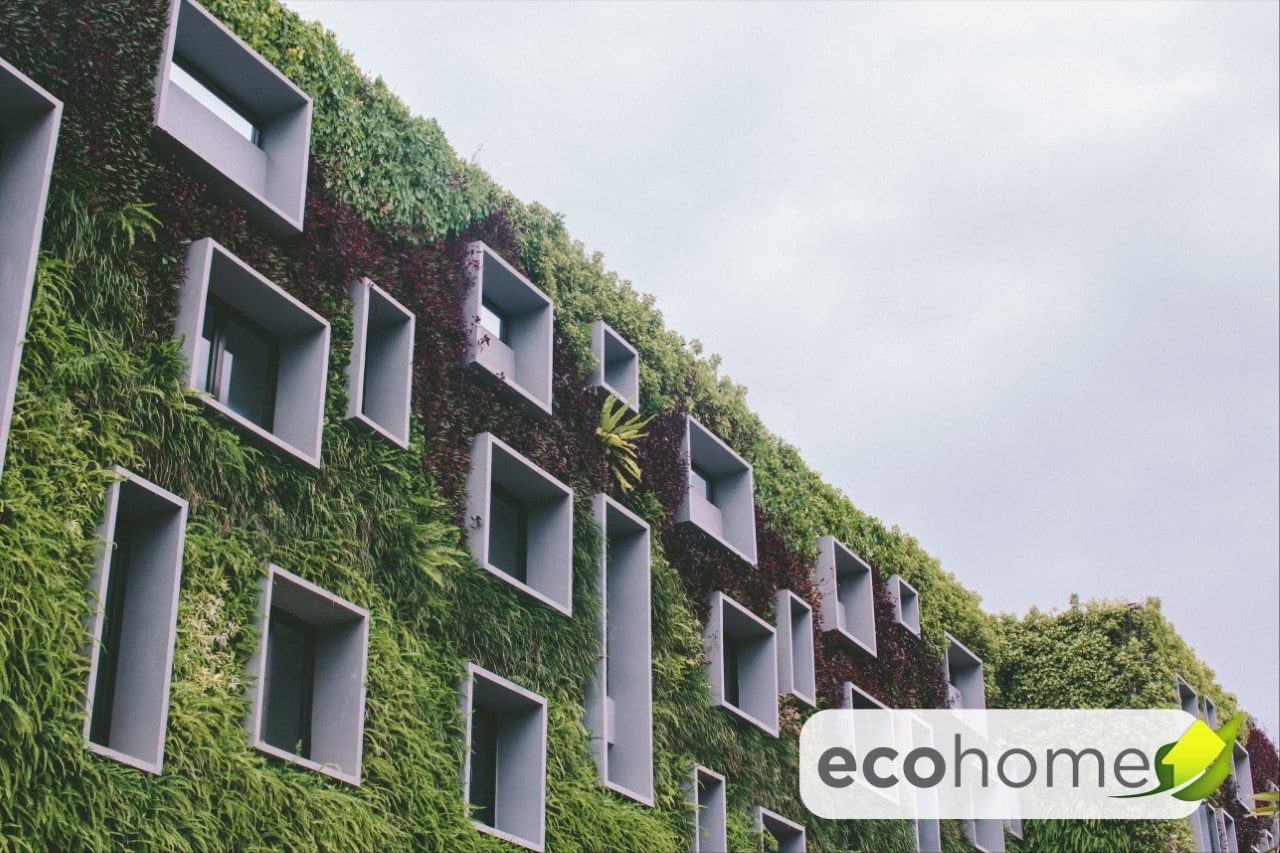
Under recent ruled announced by the Government, new homes and buildings in England must take action to produce significantly reduced quantities of CO2.
The new regulations, part of an initiative to steer the country towards net zero emissions, insist that newly built homes must sit at approximately 30% lower levels of CO2 than current standards dictate.
Developers will be taking initiatives including installing low-carbon technology, such as solar panels and heap pumps, to help deliver the UK’s climate change ambitions. Building materials will be cutting edge and used in a resourceful and energy efficient manner in order to maximise heat insulation – with the added bonus of lowering the cost of energy bills for homeowners.
These changes to England’s Building Regulations, which set standards for the design and construction of structures, follow a public consultation and will come into effect from June 2022.
An important step towards a cleaner, greener building environment, the new standards pave the way towards meeting the Future Homes and Building Standard, due to come into effect in 2025. Complementing Building Regulations, the Future Homes and Buildings Standard required that all new homes built from 2025 will produce 75-80% less carbon emissions than homes delivered under current regulations.
The recently announced rules mean that all future new homes from June 2022 onward will be net zero-ready and will not need retrofitting.
What do people really think of Eco homes?
Research carried out by Country Living found that a property’s Eco-friendly elements, including solar panels and efficient boilers, are now at the forefront of buyers considerations. E.ON Energy found that 89% of prospective purchasers want sustatinable homes that are kind to the planet, with nearly half of these explaining that spending more time at home during lockdown has encouraged them to consider a greener and more eco-friendly home environment.
How are home-builders reacting to the announcement?
Devon-based estate agents Complete Property are passionate about green living and working alongside eco-aware developers across the region. They asked their clients who are passionate about building greener homes about how they feel about the initiative.
“The requirement to produce 30% less carbon emissions in new homes is a positive step ahead of the Future Homes Standard due to come into force in 2025.
The new Regulations pave the way to the electrification of our homes as we decarbonise from gas and oil fired boilers to electric heating delivered from the UK’s predominantly renewable electricity supply.
All of ECL’s homes are also Building Biology accredited, which means that they are designed and built to enhance the health and wellbeing of its occupants. This means we use lots of natural building materials, that we are mindful of optimising natural daylight without overheating and we create an indoor environment that is hygienic, thermally comfortable (whatever the season), completely naturally ventilated and low in electro-magnetic radiation and VOCs (Volatile Organic Compounds).
So in many regards, if you want to see a ‘house fit for the future’, it would be wise not to just adopt the latest mandatory building regulation changes but to look closer to home at what Exeter City Council has quietly been pioneering for the last 15 years for their new Council housing stock and now new open market development at Clifton Hill, Exeter.” – Emma Osmundsen, Exeter City Living.
We also asked local housebuilder Belfield Developments for their feedback surrounding the recent announcement, here’s what they had to say:
“We support the Governments recent new ruling reducing CO2 emissions by a third. The construction industry is long due an overhaul to ensure that more efficient methods of building are being used to create houses that perform in a more environmentally friendly way.
The continuing increase in energy prices will further accelerate the need for reducing energy usage to keep household bills as low as possible. We believe that a fabric first approach is the best method to do this; maximising the performance of the components and materials that make up the building fabric itself.
An important element to make houses net zero is by using low carbon technology such as ASHP for hearing and MVHR for ventilation, both of which we are using on our forthcoming developments. We are investing in understanding the heath impacts of a home as we collectively spend more time in them. We are excited to be a small part of reducing the climate change while creating homes that are good for both our residents and the planet.” – Camilla Raven, Belfield Developments.
Exeter City Living, Exeter City Council’s Housing Development Company. We have been pioneering exemplar energy efficient homes and buildings for the last 15 years. In the absence of robust UK Building Regulations (even with the latest upgrades) we have instead adopted the International Passivhaus Standard as their benchmark building standard for all new homes. In addition to this, we also design all our new homes, so they are climate-ready for their lifetime. Working with Climate Scientists at Exeter University to model house designs using probabilistic weather profile data up to 2080.
What types of eco homes exist in the UK?
There are an abundance of Eco-friendly buildings now available on the market. Here’s an introduction to a few styles of homes that we’ll undoubtedly hear more about in the upcoming months.
Fabric First:
A ‘fabric first’ approach to building design involves maximising the performance of the components and materials of the building itself, prior to considering any additional use of mechanical or electrical building service systems. Home which have been constructed using the fabric first approach aim to minimise the need for energy consumption through a variety of methods such as maximising air-tightness, using super-high insulation, optimising solar gain through the provision of openings and shading, using thermal mass of the building fabric and optimising natural ventilation.
Passivhaus:
Emphasising a rigorously energy efficient design, Passivhaus standards aim to maintain an almost constant temperature within the property. Construction methods of Passivhaus buildings vary, but these all have features in common including excellent insulation, triple glazing with insulated frames, superior air-tightness levels (around 20 times more than a standard home) and mechanical ventilation with an attached heat recovery system. The low carbon technologies involved in construction a Passivhaus produce no emissions at the point of use, so will be critical in the UK’s transition towards a net zero future.
Carbon Neutral:
A carbon-neutral home (also knows as a Carbon-zero home) is a self-sustaining house that creates the same amount of renewable energy as it expels, thus creating zero carbon emissions. In effect, a zero carbon house is one that does not increase the amount of CO2 in the atmosphere.
Cradle to Cradle:
An ecologically intelligent approach to architecture that involves materials, buildings and patterns of settlement which are wholly healthful and restorative, Cradle to Cradle focusses upon the full life cycle of product or material. In effect, this means there is no end to the life of for materials used; they are perpetually recyclable to some degree, though not always in the literal sense.
The new regulations set out by the Government sit alongside £6.6 billion of direct investment during this Parliament into improving the energy efficiency of buildings.
The Social Housing Decarbonisation Fund, Local Authority Delivery scheme and Home Upgrade Grant scheme make grants available to low income households for insulation, solar panels, heat pumps and other efficiency and decarbonisation measures.
Last week, a further £400 million of funding was announced for more than 200 local authority areas as part of a new Sustainable Warmth Competition.
The latest figures show almost half (46%) of the homes in England are now rated C or above for energy efficiency, compared to 14% in 2010.
With initiatives such as the recently announced rules, the country is marching firmly towards its target of achieving zero net emissions in new build homes by 2025. Watch this space.

